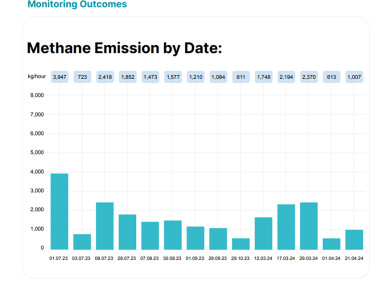Industrial emissions
Mercury Emissions in India and Indonesia
Feb 16 2022
Established under the auspices of the International Energy Agency, which advises and lobbies government on energy policy, the International Centre for Sustainable Carbon provides educational resources, news and guidance for organised involved in the production, transport, processing and utilisation of coal. The aim work is to reduce the emission of CO2 and other pollutants through high-efficiency, low-emissions technologies. Dr Lesley Sloss International Project manager at ICSC describes some of the work carried out by the Centre.
Among the pollutants released during the combustion of coal is mercury, which has been connected with various neurological diseases. Despite this danger, it is not typically a high-priority for countries early in their development of coal infrastructure, so regulation is often lacking.
As such, the International Centre for Sustainable Carbon has recently finished supervising projects to develop the infrastructure necessary to keep adequate mercury inventories. It is the Centre’s conviction that this is an indispensable first step towards the reduction of mercury emissions, that without the proper understanding nothing can be improved.
The Centre favours a bottom-up approach to inventorying, and to gather data using either sorbent-trap technology or wet chemistry. Typically, the data is processed by multiplying the energy output for each plant with the coal-specific emission factor and the plant-specific emission factor, all of which enables the analyst to derive an individual estimate of emissions from each coal unit.
Recently, the Centre has intervened in a number of developing Asian economies.
In Indonesia, the mercury emissions of over 100 plants were inventoried and it was determined that 15 units were producing over 50% of emissions within the fleet over a lifetime. It was recommended, then, that control technologies only needed to be added to the processes of the main offenders, saving local governments and regulators the time and money it would have taken to needlessly improve the remaining units.
In India, the ICSC evaluated current standards in mercury monitoring across the nation. On the whole, Indian plants are over-achieving, but the report suggested that data derived from continuous emissions monitoring be both real-time and transparent to regulators.
If you’d like to hear the International Project Manager for ICSC, Dr. Lesley Sloss, discuss the projects in detail, you can watch the full recording of her lecture here.
Digital Edition
AET 28.4 Oct/Nov 2024
November 2024
Gas Detection - Go from lagging to leading: why investment in gas detection makes sense Air Monitoring - Swirl and vortex meters will aid green hydrogen production - Beyond the Stack: Emi...
View all digital editions
Events
Jan 12 2025 Abu Dhabi, UAE
Jan 14 2025 Abu Dhabi, UAE
Jan 20 2025 San Diego, CA, USA
Carrefour des Gestions Locales de L'eau
Jan 22 2025 Rennes, France
Safety, Health & Wellbeing LIVE
Jan 22 2025 Manchester, UK



















